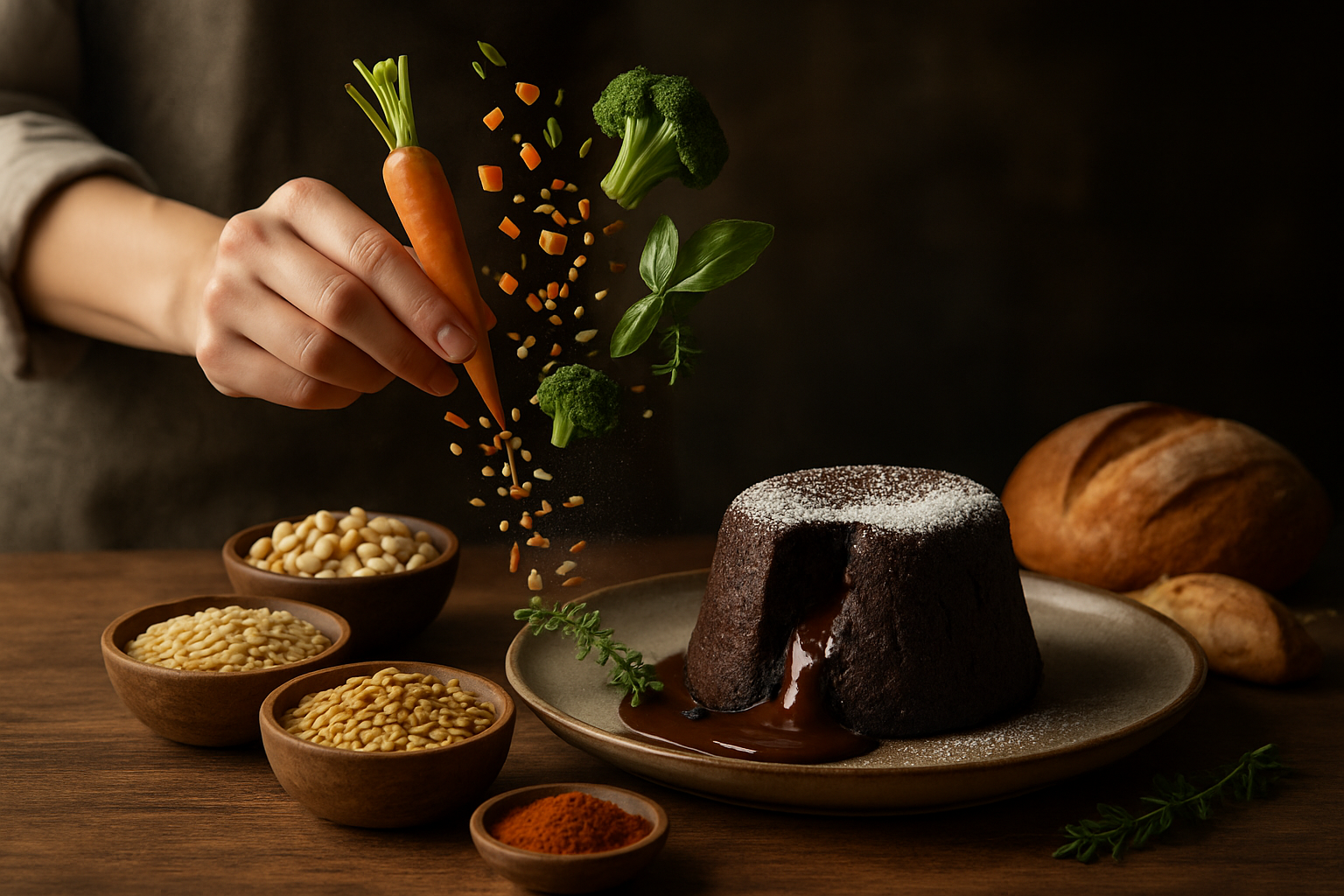Culinary Alchemy: Transforming Humble Ingredients
Discover the art of culinary alchemy, where ordinary ingredients are transformed into extraordinary dishes. This fascinating approach to cooking challenges chefs to elevate simple, often overlooked components into gourmet creations. By mastering innovative techniques and embracing creativity, anyone can unlock the hidden potential of everyday ingredients and create memorable dining experiences.

Elevating Root Vegetables
Root vegetables often play a supporting role in many dishes, but with the right techniques, they can become the star of the show. One innovative approach is to treat root vegetables like meat, applying methods typically reserved for proteins. For example, try “steaking” a whole celeriac: season it generously, sear it in a hot pan to develop a flavorful crust, then finish it in the oven. The result is a tender, meaty centerpiece with complex flavors and a satisfying texture. Another technique is to create vegetable “charcuterie” by thinly slicing and curing root vegetables like beets or carrots, mimicking the process used for cured meats. This method concentrates flavors and creates a unique texture that can elevate a simple vegetable platter into a gourmet experience. By thinking outside the box and applying unexpected techniques, root vegetables can be transformed from humble side dishes into sophisticated culinary creations.
Reinventing Legumes and Grains
Legumes and grains are often overlooked in fine dining, but they offer endless possibilities for culinary alchemy. One innovative approach is to create “faux caviar” using tapioca pearls or chia seeds. By infusing these tiny spheres with intense flavors like squid ink, truffle, or saffron, chefs can create a luxurious garnish that adds both visual appeal and bursts of flavor to dishes. Another technique is to transform legumes into creamy, indulgent desserts. For example, black bean brownies or chickpea blondies challenge our expectations of what dessert can be, while also offering a healthier alternative to traditional sweets. Grains can also be reimagined in unexpected ways, such as using crispy puffed quinoa as a crunchy topping for salads or desserts, or fermenting rice to create complex, tangy flavors in savory dishes. By thinking creatively about texture, flavor, and presentation, even the most basic legumes and grains can be elevated to gourmet status.
Unleashing the Potential of Herbs and Spices
Herbs and spices are powerful tools in culinary alchemy, capable of transforming dishes with just a pinch or a sprinkle. One innovative approach is to create herb and spice “dusts” by dehydrating and pulverizing ingredients like kale, beet greens, or even flower petals. These vibrant, flavorful powders can be used to add bursts of color and intense taste to dishes, elevating both the visual appeal and flavor profile. Another technique is to infuse oils and vinegars with unexpected herbs and spices, creating unique flavor bases for dressings, marinades, and sauces. For example, try infusing olive oil with smoked paprika and star anise, or creating a vinegar infused with lemongrass and kaffir lime leaves. These custom infusions can add depth and complexity to even the simplest dishes. By exploring new combinations and applications for herbs and spices, chefs can create signature flavors that set their cuisine apart.
Transforming Texture and Form
One of the most exciting aspects of culinary alchemy is the ability to transform the texture and form of ingredients, creating entirely new dining experiences. Molecular gastronomy techniques offer a wealth of possibilities in this area. For example, spherification can be used to create caviar-like pearls out of fruit juices or sauces, adding an element of surprise and luxury to dishes. Foams and airs can be made from unexpected ingredients like vegetables or cheeses, adding lightness and visual interest to plates. Even simple ingredients like water can be transformed through techniques like gelification, creating clear, flavorful “noodles” that challenge diners’ expectations. By playing with texture and form, chefs can create dishes that engage all the senses, turning a meal into a multi-dimensional experience that goes beyond just taste.
Culinary Alchemy Tips & Facts
• Experiment with different cooking methods to unlock new flavors in familiar ingredients
• Use a dehydrator to concentrate flavors and create unique textures
• Try fermenting vegetables to add depth and complexity to dishes
• Explore sous vide cooking for precise temperature control and texture manipulation
• Incorporate edible flowers to add visual appeal and subtle flavors
• Use liquid nitrogen for instant freezing and creating interesting textures
• Experiment with unusual flavor pairings to discover new taste combinations
• Try smoking unexpected ingredients like butter or salt for added depth
Culinary alchemy is more than just a set of techniques; it’s a mindset that encourages creativity, experimentation, and a willingness to challenge culinary conventions. By embracing this approach, chefs and home cooks alike can transform even the most humble ingredients into extraordinary culinary experiences. The key is to remain curious, open-minded, and willing to take risks in the kitchen. As we continue to explore the boundaries of what’s possible with food, we unlock new flavors, textures, and presentations that keep the culinary world exciting and ever-evolving. So the next time you look at a simple vegetable or a common grain, consider the alchemical potential it holds – you might just create culinary gold.





